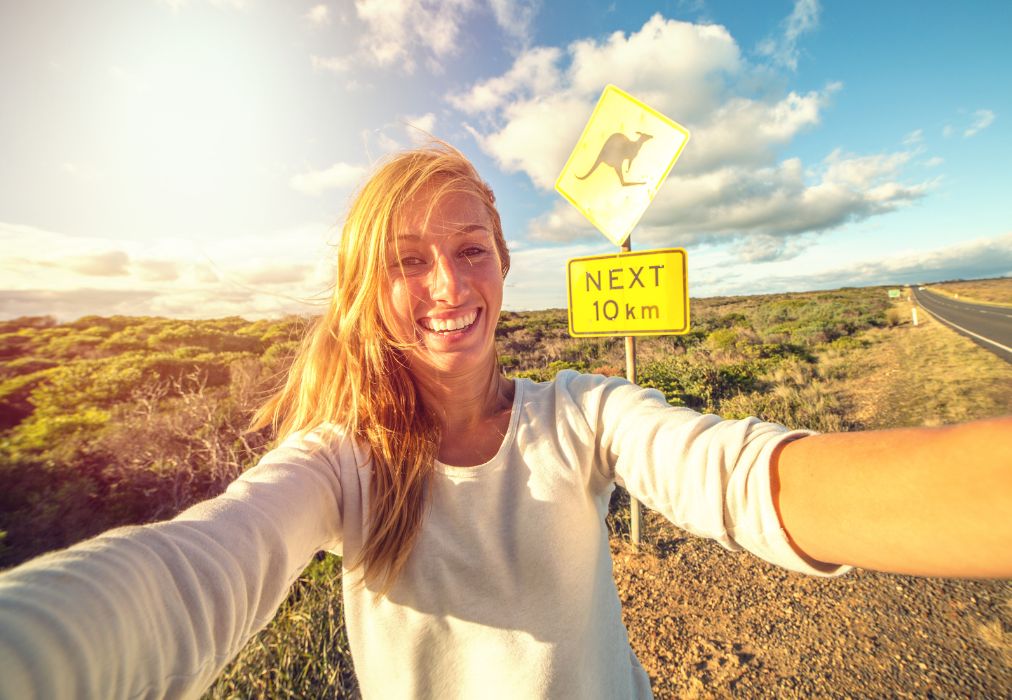Wondering what to pack for our trip to Australia in the springtime? Let a local tell you.
In this article you’ll find an intro to the weather in the various parts of Australia at that time of year and a handy list of suggestions for things to bring.
In the spring, the weather can vary a lot from the arid weather in the outback to the tropical coast or the cities in the southeast, so it is important to pack smartly to be prepared for each microclimate.
Along with a list of suggestions for what to bring, we have included tips on how to dress in Australia based on what we, local women, like to wear, and a list of must-haves the Solo Female Travelers team packs on our solo trips that we hope will be useful.
Looking for travel tips to Australia? I’ve also written the essentials you need to know here.
Weather in Australia in Spring
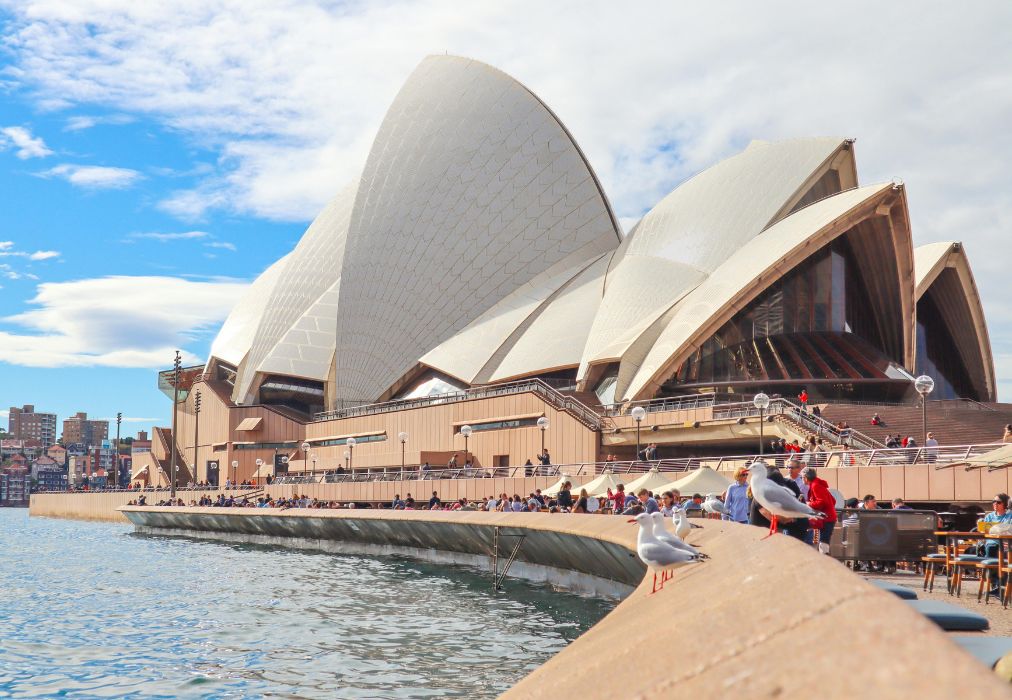
Australia is a huge country with diverse microclimates and weather patterns throughout the year and across its geography. This makes finding the right time to visit a challenge that will depend on what you plan to go.
If you want to explore both the Outback as well as the cities and The Great Barrier Reef, October is the most optimal month because:
- It is dry and warm in the Red Center and Outback, but temperatures drop at night and the flies season has not yet started, so you needn’t cover your face.
- It is warm, balmy and mostly dry in Cairns and The Great Barrier Reef but the jellyfish season has not yet started so you don’t need wetsuits to get into the water.
- It is springtime in Perth, Canberra, Melbourne and Sydney, so it won’t be beach weather for most, but it will be pleasant and sunny, with low risk of rain and great temperatures to be outdoors and enjoy nature.
Temperatures in Australia in October
Below is a list of temperatures, chance of rainfall and hours of sunshine in October for the key tourist destinations in Australia.
- Sydney: 14 C (57 F) to 21 C (70 F), with 13 hours of daylight, and an average chance of rain at 6 days for the month.
- Melbourne: 11 C (52 F) to 20 C (68 F), 13 hours of daylight, and an average chance of rain at 8 days for the month.
- Perth: 13 C (55 F) to 22 C (72 F), with 13 hours of daylight, and 6 days with a chance of rain.
- Canberra: 7 C (45 F) to 20 C (68 F), with 13.5 hours of daylight, and 6 days with a chance of rain.
- Cairns: 21 C (70 F) to 29 C (84 F), 12.5 hours of daylight, and 5 days with a chance of rain, making this the driest month of the year.
- Uluru: 11 C (52 F) to 29 C (84 F), with 12 hours of daylight, and 3 days with a chance of rain, which is average in this part of Australia.
The sun will rise between 6am and 7am across the country in October, and set between 6,30pm and 7,30pm leaving most of the day to explore.
Seasonal events to consider
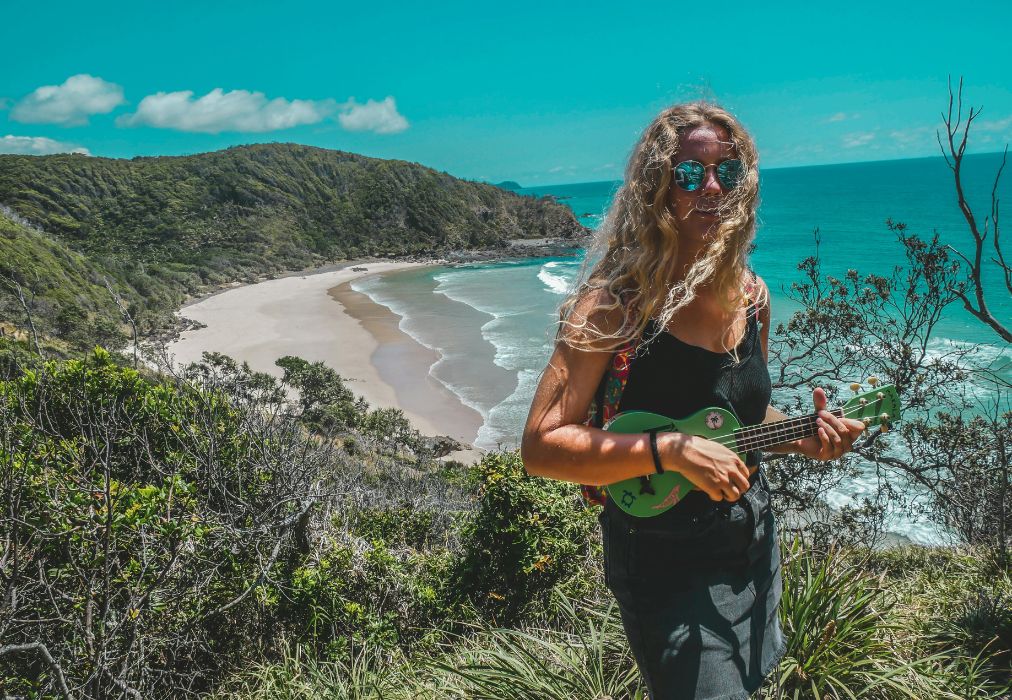
If you are planning to explore, you also need to consider the main natural events that can affect your travel plans:
- Jellyfish season in Tropical North Queensland and The Great Barrier Reef: November to May. There are two types of poisonous and dangerous jellyfish, the box jellyfish and Irukandji, that would require you to wear a stinger suit (lighter version of a wetsuit, of which the purpose is to put a barrier between your skin and possible contact with any jellyfish) and stay alert. We travel outside of this season.
- Wet season in the north: November to April.
- School holidays in the specific state you visit. This is a time when prices are much higher and Australian families fill some of the popular tourist spots, making crowds a consideration and pushing prices of hotels and domestic flights up.
- Bush Flies season: At the end of spring, flies in Australia’s Outback become unbearably annoying, and you could end up with your face and body covered in them, which is why locals wear fly nets over their heads. Flies are most active in August and September but start to appear in May and cease in October.
October is a month that is free from jellyfish, monsoon rains, and huge volumes of bush flies (you’ll never travel to The Outback and completely avoid flies, but October is a better month than most). While there are some public holidays during the month, they can be avoided.
How to dress in Australia in the Spring
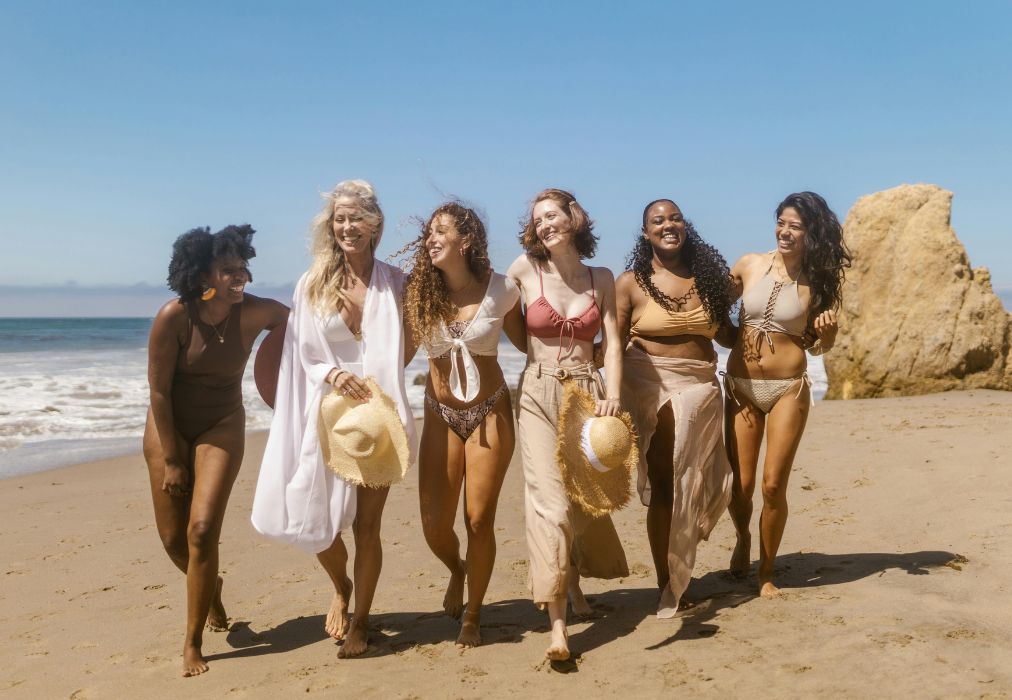
Do as the locals do and take advantage of the casual and comfy but chic styles Aussie women sport all year long!
There are no restrictions, cultural or otherwise, on what clothes you should or should not wear. Higher-end fine dining restaurants may have dress codes, but otherwise, anything comfy goes.
Hint: It’s typically not about the classy outfits worn in Italy’s Amalfi Coast, Tuscany region and especially Venice, but rather the chilled out, Boho-chic, elevated mediterranean styles seen in Greece, Barcelona and Croatia and Montenegro.
See all our item recommendations in one place on our Amazon Storefront here.
Bohemian Chic laid back sophistication
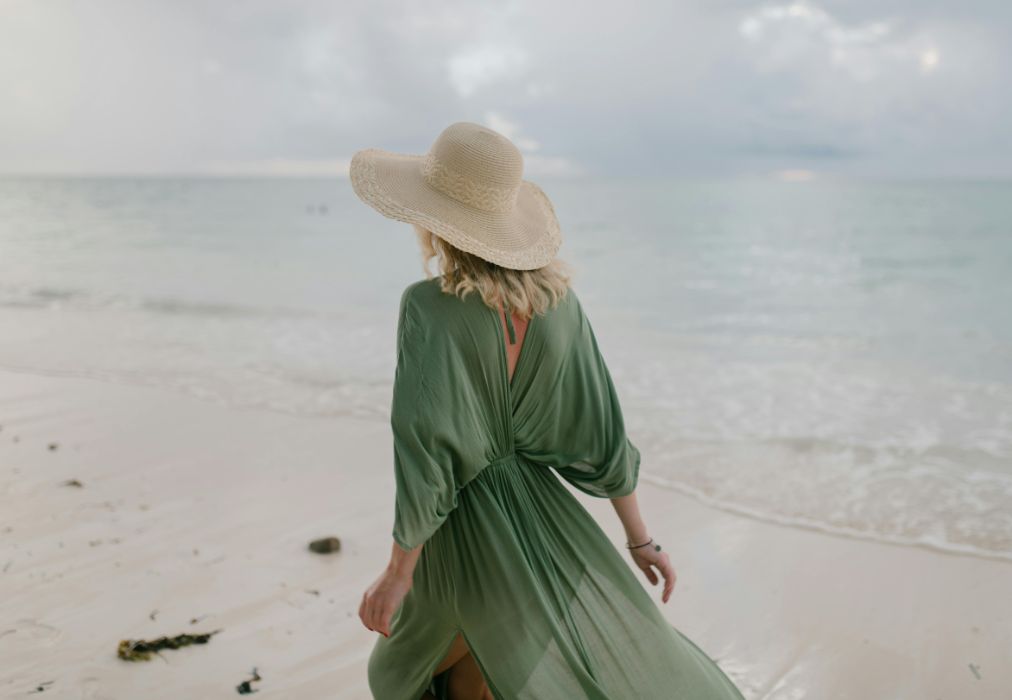
There’s a distinct sense of effortless chic in Australian fashion, and locals just know how to put together an outfit that’s comfy, casual and sophisticated all at the same time.
Brands in Australia often focus on clean lines, sophisticated cuts, and high-quality materials that offer a polished yet understated look.
This usually translates into neutral colors, flowy materials, loose fits, long dresses and sandals. Once you spend a bit of time in the country, you start to recognise the look.
In the contemporary cities of Sydney and Melbourne, the dress code veers more towards designer chic than in the beachy surfer towns along the coast, but Boho chic is the vibe you’ll see portrayed by most Australian fashion designers.
Layers, layers, layers
No matter when you visit Australia you will encounter different climates across the country. If you plan to visit the Red Center, you will also have to face big changes in temperatures between day and night.
It pays to be prepared with a pashmina, an oversized cardigan, a fleece jacket and even a packable rain jacket to make sure you are prepared for anything.
Beach dress code
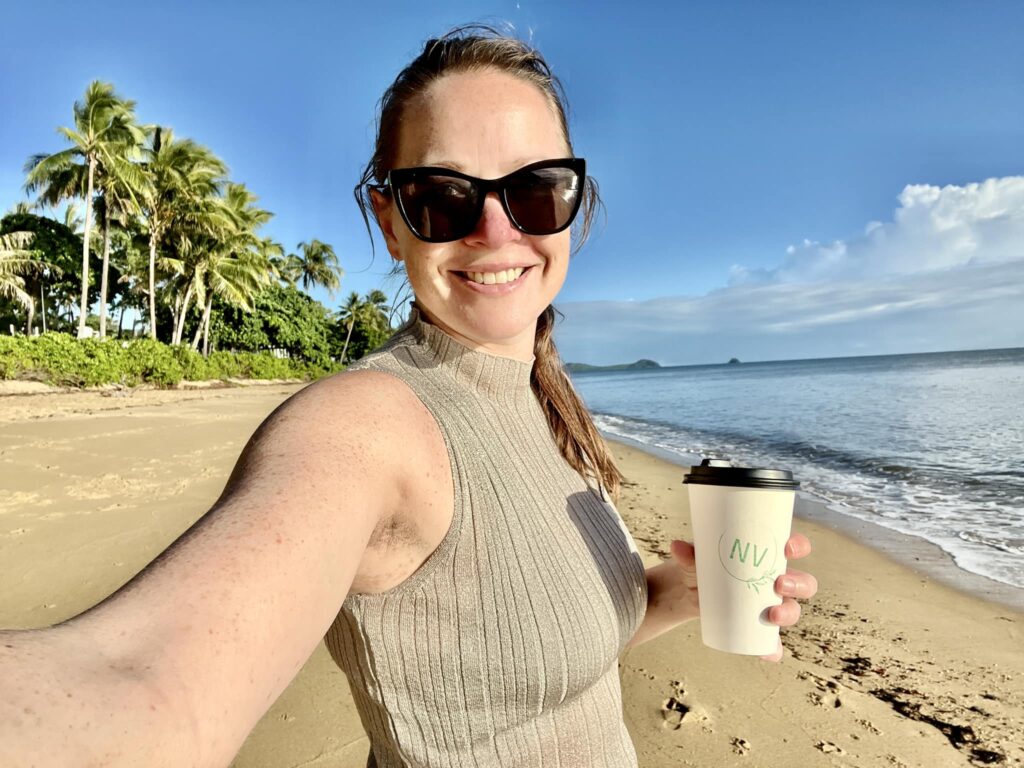
Australians are a really casual bunch, even more so at the beach.
It is common to see women in bikinis and a cover-up, romper, skirts or shorts, and men in swim shorts and (maybe) an unbuttoned shirts riding their bikes towards the beach.
Shoes are optional and it’s not uncommon to see Aussies barefoot or just wearing a pair of flip flops or thongs in Australian slang.
While you can pretty much put on whatever on the beach and adjacent areas, don’t take your beach attire to a restaurant unless it’s one which is actually on the beach, where it’s easy to dress up any swimsuit with a sarong, a classy dress shirt or a more sheer one, a cute skirt or a cotton pair of shorts.
Australian restaurants commonly employ the “no shirt, no shoes, no service” rule. So when eating out from the beach, you’ll be expected to cover up; throw on a flowy dress and a pair of strappy sandals.
Sun Protection
Australia has some of the highest levels of UV radiation in the world.
With significant depletion of the southern hemisphere’s ozone layer, protecting your skin with sunscreen and (not or) sun protection clothing prevents sun damage, premature aging, and reduces the likelihood of developing skin cancers.
Trust me when I say this, don’t mess with Australia’s sunshine! Here is your go-to sun protection kit:
- Sun shirts and rashguards are important on hikes or while surfing
- Strong and reef-safe sunscreen is incredibly important to apply AND reapply to make sure you’re staying safe and protected. Australian brand Sun Bum has been designed with Aussie’s sunshine in mind and is safe for reef use, vegan and gentle on the skin. I have used it for years. Bonus points for smelling tropical, like a pina colada. Get sunscreen for the body, for the face, for your hair and scalp and for your lips.
- If you plan to stay out in the sun dor hours (eg. surfing), consider mineral protection which offers a physical barrier to the sunrays. There’s a reason why all surfers use this. Sun Bum has a range too.
- After sun for when you missed a spot or didn’t reapply enough. It also helps take care of your skin when in the sun, sea, sand and wind for long periods of time when your skin starts to feel leathery. You know the feeling. Again, I love Sun Bum’s after sun cool down lotion.
Bags and anti theft purses
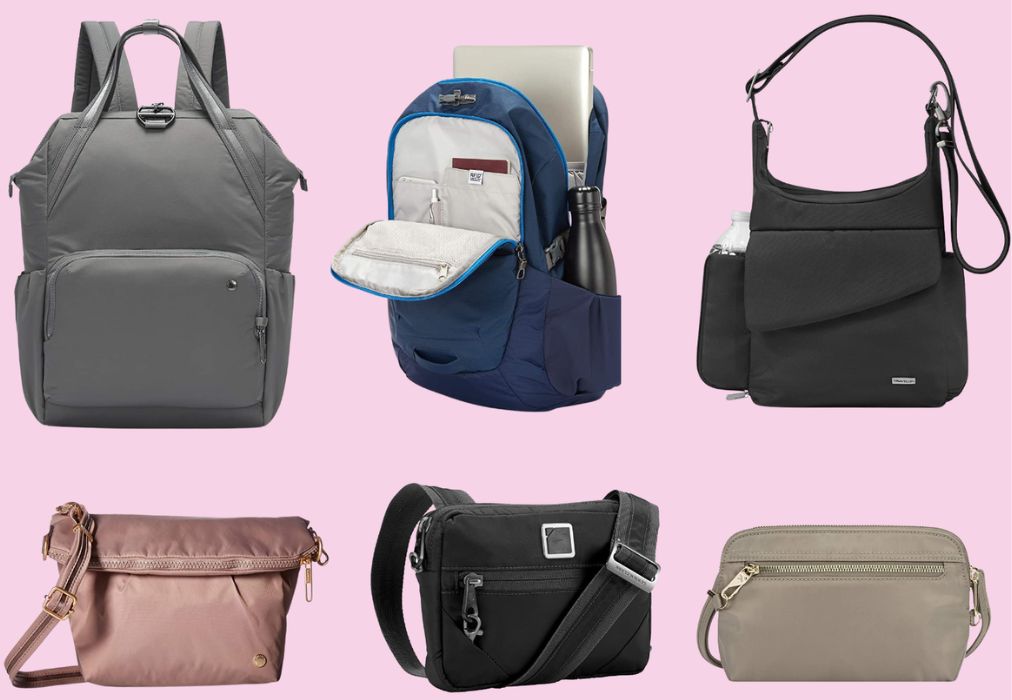
Although pickpocketing is not as much of an issue in Australia as it is in some European cities, it’s always a good idea to keep your valuables safe and your bag in the front and zipped.
Slash and theft proof cross-body bags like the ones we listed on this article are a great idea, and in crowded areas, keep your arm on your bag’s zipper for extra protection. I have this crossbody Pacsafe anti-theft bag that I use on all my travels.
Look out for situations in which anyone is trying to distract you by trying to sell you something, talking to you or drawing your attention to anything while someone else steals your wallet or phone. Read our full article on safety tips here.
Want to know how to stay safe and prevent a negative experience or encounter on your travels? Check out EMPOWERFUL, a series of 35+ sessions, 40+ experts and over 50+ hours of learning via masterclasses, panel discussions, and inspiring interviews to empower YOU to travel solo!
Go local
Dressing from and supporting local female-owned businesses is a great way to immerse yourself in Australian culture and provides you with a great and actually useful souvenir.
Here’s a few Australian fashion brands that are female-owned and operated:
Zimmermann: Famous for its luxurious and effortlessly chic designs. They offer stunning swimwear, dresses, and separates that fit perfectly with Australia’s warm, stylish vibe. Their collections are known for beautiful prints and elegant cuts, making them great for everything from beach days to city strolls.
SIR the Label: Founded by a talented team of women the brand is all about modern, minimalist fashion. Their versatile pieces, including dresses, tops, and trousers, are designed to combine comfort with just a touch of sophistication. Ideal for exploring cities or heading out for a night, their clothing covers all the bases.
AERE: Co-founded by designer Amy Roberts and focused on contemporary wardrobe essentials. They offer stylish and versatile pieces, from cozy loungewear to polished outfits that work well for Australia’s varied weather and settings.
Saba: is known for its classic, tailored pieces that blend modern design with practical functionality. Founded by Saba, the brand provides smart casual wear and chic day-to-night outfits, perfect for both business and leisure during your travels.
The Slow Label: Created by Aimee & Nicole and focused on sustainable, ethically-made fashion. Their collections feature comfy, high-quality basics and stylish garments that are eco-friendly and ideal for navigating Australia’s diverse climate and activities.
These brands offer a great mix of high fashion and practicality, ensuring you’ll stay stylish and comfortable while exploring Australia.
What to pack for your trip to Australia
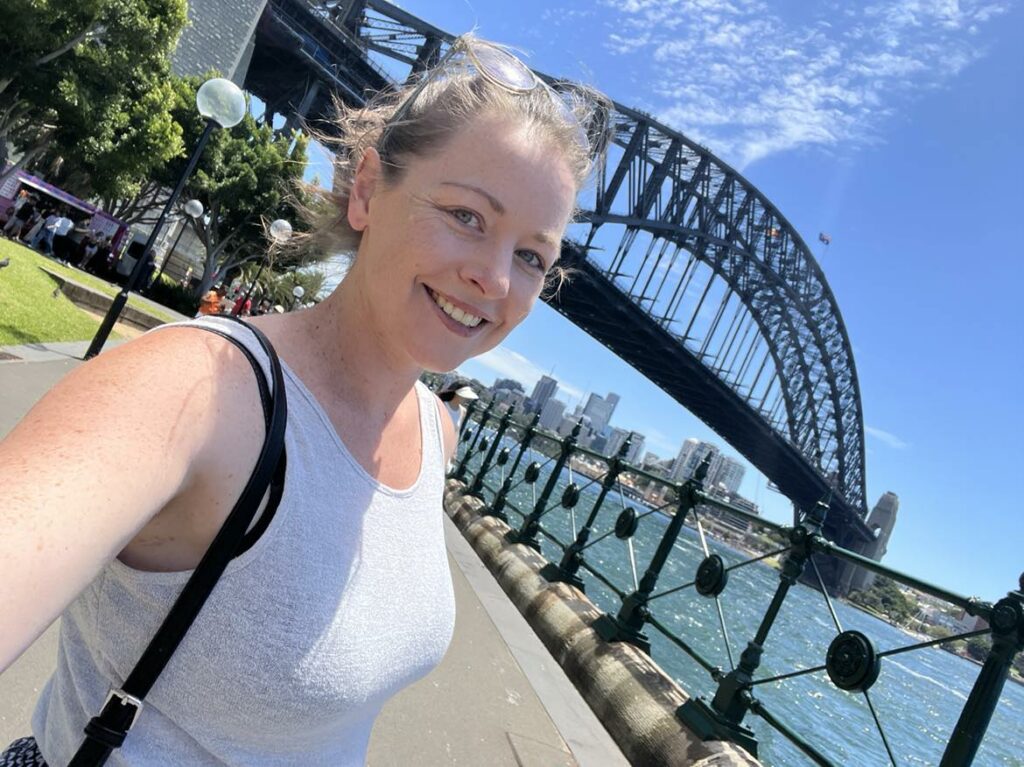
As mentioned before, Aussie style is laid back, Bohemian chic but sophisticated, even though this may seem like an oxymoron.
Tops
Australian women like to wear comfy but cute tshirts, sleeveless, strapless or tank tops and blouses that may be floral, with a design or have details that make them a bit more than just a white t-shirt. Materials such as cotton and silk can dress you up and keep you cool, while linen works just as great in the Aussie heat.
Crop tops, spaghetti strap tops and other clothes that show a lot of skin are certainly worn by younger women (like everywhere else) and like we said – anything goes. Dress in what makes you feel cute, confident and stylish!
Jackets and cover ups
In the cities, springtime usually means sunny days but very mild temperatures, so you’ll need a light jacket or oversized cardigan in case it gets cloudy or you are used to much warmer weather. These can also come in handy in the tropical parts of the country in the evening, when the sea breeze cools down.
In The Outback, temperatures drop quite a bit at night so you will need a proper fleece to stay warm while enjoying the sunrise, The Field of Lights or the starry night in Uluru and beyond. This can also come in handy on long-haul flights when the AC drops a lot and you are trying to sleep.
Dresses
Dresses are a traveler’s best friend; They are light, don’t occupy a lot of space in your suitcase and are an entire outfit that you just put on and accessorize to suit many different situations. You can dress them down with a pair of cute sneakers or up with a nice pair of earrings and necklace, a jacket or a scarf.
A shorter long-sleeved tunic dress or a flowy version is the best outfit for warmer weather and it will come in handy in Cairns and the tropical coast during the day. I opt for long sleeved ones because they provide more protection from the sun and don’t require me to continuously reapply sunscreen on arms and cleavage.
Long sleeved Boho dresses, a long and comfy shirt dress or a shorter one paired with leggings or stockings are great for the cities where temperatures in spring are still chilly to bare your legs, or at night when temperatures drop even on the coast.
A classy long dress like this fitted one or any of the flowy and beautiful ones from Chicwish (I am a fan and have 3 pieces from them) with a blazer or a cute jacket makes for a great outfit for an upscale dinner or a more dressy event.
Skirts and shorts
A skirt with a top is a great alternative to a dress. Flowy skirts are usually preferable to a tight one that can result in chafing (this anti-chafing stick does wonders) or roll up when walking.
Both Mar and I have a tulle skirt like this that channels Carrie from Sex and the City, and Mar has this chiffon maxi skirt in two colors. Long skirts are classy, comfortable even if it is windy, and can go from day in the cities to night by the coast.
Shorts are comfortable, easy to pair with a t-shirt or top and useful on boat rides to The Great Barrier Reef. Plus, they are safer than short skirts in the wind.
Trousers
In cities in spring, you will most likely wear trousers which will not only keep you warm but also protect you from the sun (yes, even in the cooler months the sun rays can still get you sunburned).
A pair of classic chinos are a great basic item to pack for springtime trips to Australia. Style them with a t-shirt, a light jacket, some accessories and a pair of cute sneakers and you have a perfectly comfy outfit.
Summer slim fit capri jeans (especially in white) are another option. They don’t crease and pack light and the three-quarters length adds flair.
Athleisure and outdoors clothing
Yoga pants, or a pair of cute joggers if you prefer looser pieces like me, are a great comfortable outfit to pack for outdoorsy days. They are light and comfy for those hikes and walks, and they take up no space in your suitcase. Plus they don’t crease, making them a traveler’s best friend.
A couple of long sleeved tops like this best selling SPF50 rash guard or this loose and light one will complement the look for hiking days, have you protected from the sun and ready to spend time outdoors.
Swimwear
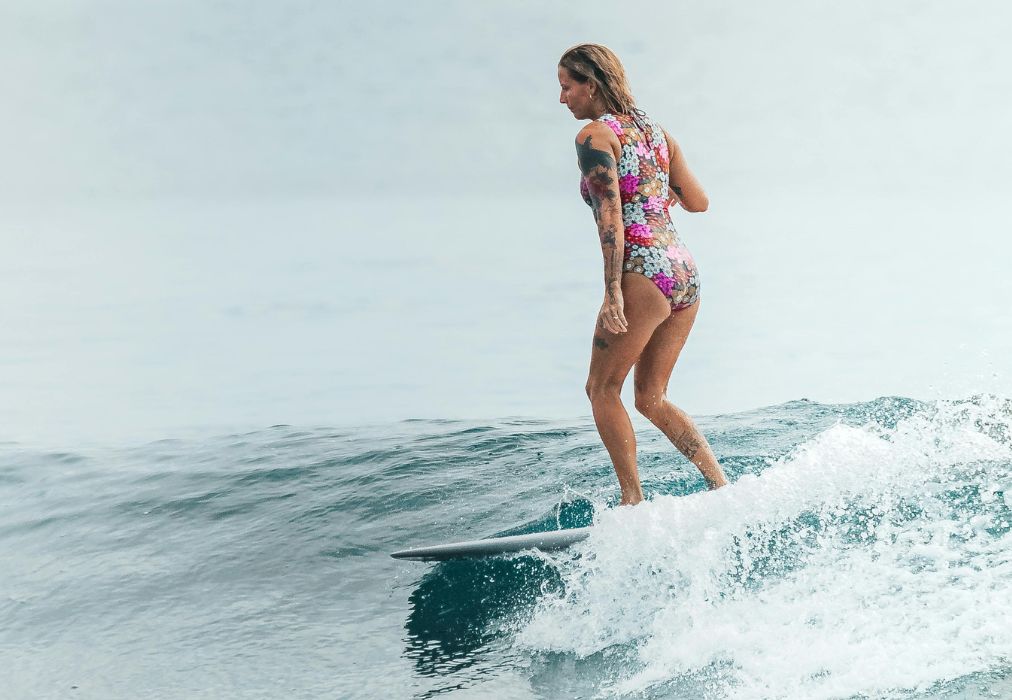
Visiting The Great Barrier Reef or the tropical coast means plenty of time at the beach so packing swimwear is essential.
If you plan to go snorkeling, surfing or participating in any water activities, consider packing a long-sleeved one piece that covers your back from the sun and provides extra protection or an SPF long-sleeved rash guard.
Take a look at the sporty brands like Roxy, Hurley or Quicksilver all of which are widely worn on Australia’s beaches.
If you plan to venture to the many beaches, bring your own sarong, quick dry towel or Turkish beach towel and remember that some beaches can be pebbly and rocky rather than sandy, so bring a pair of water shoes.
Comfortable, supportive and lightweight footwear
On our spring trip to Australia you will need shoes for the cities, the beach and The Outback, where it is mostly dusty and rocky.
In the cities, I would recommend close-toe shoes rather than sandals, as it may not be hot enough. You can opt for sporty options or more dressy ones like a pair of cute ballerina flats.
A pair of canvas sneakers, like the ever present Italian brand Superga, or any other sturdy pair of shoes that provides support (aka holds your foot in place) and cushion (for the long days of walking) but that are cute, like these Vintage Havana ones or these Dr. Scholl’s sneakers.
Or go for the local Allbirds, from New Zealand, the epitome of comfort, made with Kiwi merino breathable wool.
You can also wear espadrilles, like the many cute models from Spanish designed Toni Pons that come in flat, ankle strap or wedge to dress up an evening outfit.
I love my Anothersole flats which are super pretty and extremely comfortable. I often get complimented on them.
Sandals are the name of the game in the tropical parts of the country. If you are exploring, opt for a pair of comfortable ones that keep your feet in place (eg. with an ankle strap), have grip, and a sturdy sole. These are a very supportive and versatile option.
Or do as Australians do and don a pair of minimalistic, golden flat sandals that can upgrade any outfit.
For the beach, the coast and any boat trips, waterproof sandals, reef shoes or the omnipresent Havaianas flip flops will come in handy and make you fit right in.
A pair of sneakers (I wear these ones from New Balance) will come in handy for outdoor activities like the coastal hike to Bondi in Sydney or a day out in the Blue Mountains.
More technical hiking shoes like these ones from Salomon (<- this is the pair I have) are a must if you’re planning to take advantage of the trails and many national parks the country has to offer, or if you visit The Outback.
A day pack
If you plan to hike or spend time outdoors, it pays to have a daypack to bring all you’ll need, from your water bottle to snacks, your raincoat, a warm layer, sunglasses, sunscreen, first aid kit, etc.
This compact, packable one is a convenient option. Or you can go for a smaller belt bag that is enough for shorter hikes.
Other items you should pack for Australia
| A sun hat: Useful at the beach and when exploring the cities on foot, the sun is very strong and I don’t recommend spending hours in it without a hat. Check out this wide brim one. | |
| Floppy Hat: In Uluru or when hiking, a floppy sun hat like this one from Columbia is a good idea. Alternatively, a cap will also help you protect from the sun, but since the sun rays come sideways, you will need to layer on the sunscreen or use a scarf. | |
| Umbrella or raincoat: An umbrella can come in handy in case of rain, especially in the cities where there is less wind and they can still be useful. This one is great. If you prefer to wear your raincover, opt for a poncho or a raincoat. | |
| Mosquito repellent: I have used and can recommend 3 brands, all with at least 30% DEET. Repel brand is one I find everywhere so it’s the one I use the most. Ben’s also very effective and I have bought their small bottles, perfect for travel, before. Lastly, OFF! Is another pervasive and widely available option that works too. Unfortunately, natural repellents don’t work as well so you may want to bring the DEET ones in case you still get bitten. Most repellents won’t work well on flies, though DEET is not a scent they particularly like. Also Cinnamon, lavender, eucalyptus, peppermint and lemongrass essential oils are smells they hate. | |
| Fly net: Flies can be a real nuisance at Uluru although springtime is only the beginning of the fly season. They don’t bite but they will more than happily get up in your business and make an easily-frustrated person furious! So, why not take a fly net with you? It may seem like a very unusual thing to do but you will not be out of place in Uluru. A net mesh like this one is affordable and can be placed over your hat. | |
| Motion sickness tablets: If you are planning to take day trips or ferries in The Great Barrier Reef like we do, sea sickness medication is a good idea to avoid nausea ruining your day. Many of the guests on our tours, including myself, use motion sickness patches, even on the Greek islands sailing tour, and they spend a week without getting sick. | |
| Universal plug adaptor: The best way to ensure you will be able to use any plug is by packing a universal adaptor. I like the ones which come with USB ports so that I can charge phones, cameras and everything else with just one adaptor. I love this one because it has USB ports for all the electronics I now carry. | |
| Power bank: Because the days will be long and you will spend many hours in the car, making several stops along the way, a power bank will ensure you can continue taking photos. The Anker Portable Charger has a 20,680mAh capacity, and fast-charging USB-C ports, you can power up your devices in a flash, while the LED display keeps you in the know about your battery level. It’s the perfect companion for road trips, travel adventures, or just surviving a long day out and about. | |
| GoPro action camera: Australia is a place filled with wonder and adventure and what better way to capture it than with an outdoor action camera you can use in the cities, on a helicopter ride, while hiking or when snorkeling or swimming in The Great Barrier Reef. GoPro is the best option and has come down a lot in price from launch. | |
| Sunglasses: The sun can also be very damaging to your eyesight, so a pair of proper sunglasses is essential for protecting the eyes from harmful UV rays and glare. I like and use Oakley sunglasses for the last 25 years as they are polarised and protect my eyes from any damaging sun rays and from the dust because they usually come quite close to the face. | |
| Waterproof mobile phone case: If your phone is water resistant as many are these days, a few drops of rain or splash from an ocean wave won’t cause too much damage. If your phone isn’t water resistant, a waterproof case like this one, commonly purchased by our guests, could be handy on island / boat tours or if you plan to go surfing. | |
| Wet bag: A wet bag is useful on the days at the beach if you are flying the next day, like we will do. You can put your swimming suit inside, in case it has not fully dried out, and keep it from making everything else wet. Wet bags can also be used to put dirty underwear. | |
| Water bottle: Single use plastic bottles are terrible for the environment so I recommend you bring your own reusable bottle as part of our efforts towards zero-waste and responsible travel. Tap water in Australia is totally safe to drink. | |
| Sun protection: Sunscreen is so important as Australia has some of the highest UV rays in the world, and can cause skin damage, especially during Australia’s extended daylight hours during the summer. I highly recommend Aussie brand Sun Bum which is specifically designed for Australia’s sun, is vegan, reef-safe and smells heavenly. They have a travel pack with sizes below 100ml that comes with a pretty pouch and includes sunscreen, lip balm (very important) and aftersun. | |
| Body lotion: The weather can be quite dry and dusty in Uluru, humid on the coast and variable in the cities in the spring, so a good body lotion is always a good idea. Plus it’s more environmentally friendly to bring your own in a small reusable bottle than to use the disposable toiletries given at lodges. Everyone has their favorites but you really do need hardcore hydration in the dry bush. My sister gifted me a Body Shop Christmas Advent calendar that came with many of their products to try and this 96h hydration body butter is amazing. It comes in a flat recycled plastic tub with an aluminum lid that’s super easy for travel and anti-spill (I can testify to that since I’ve traveled a few countries with it). | |
| Biodegradable tissue and wet wipes: It’s a good idea to have a small packet of biodegradable wet towels handy for any hikes or adventures through Australia’s rugged terrain, beaches and Outback. These ones are specifically designed for outdoorsy people. | |
| Travel pillow: No matter where you come from, a trip to Australia is at least a 10 hour flight. Mar and I use the Turtle neck. | |
| Sleep mask: Although hotels have proper blinds, you will be sharing the room with another traveler who may be a late owl. Nothing beats Manta Sleep mask to block the sound and light. I have been using mine for a year. For something simpler, bring a sleep mask like this one. | |
| Pajamas: On our tours, we pair you up with a fellow solo female traveler that we think you’ll get along with – so don’t forget to pack your pajamas! Here’s a comfy choice from Amazon. | |
| Ear plugs: If you are a light sleeper, a pair of ear plugs can help you sleep better, especially if you are sharing a room with someone else. Check these out on Amazon. | |
| First aid kit and medication: Available medications, brands and products in Australia may not be the same as back home, so it’s always best to bring everything you are used to and of course, all prescription medication or vitamins you take. You should also think about packing a basic first aid kit with items such as painkillers, plasters and antiseptic ointment, motion sickness tablets, antihistamines, electrolyte powder in case of diarrhea (or hangovers form all the whisky), plus any other tummy ache related tablets or medicines your doctor may suggest (antacid, diarrhea tablets, etc.). Don’t forget blister bandages in case you get blisters hiking. See our First Aid Kit list here. | |
| A foldable toiletry bag: I always travel with a foldable toiletry bag which I can hang anywhere. They also help you keep everything easy to find and tidy. This one is very cute and functional! |

